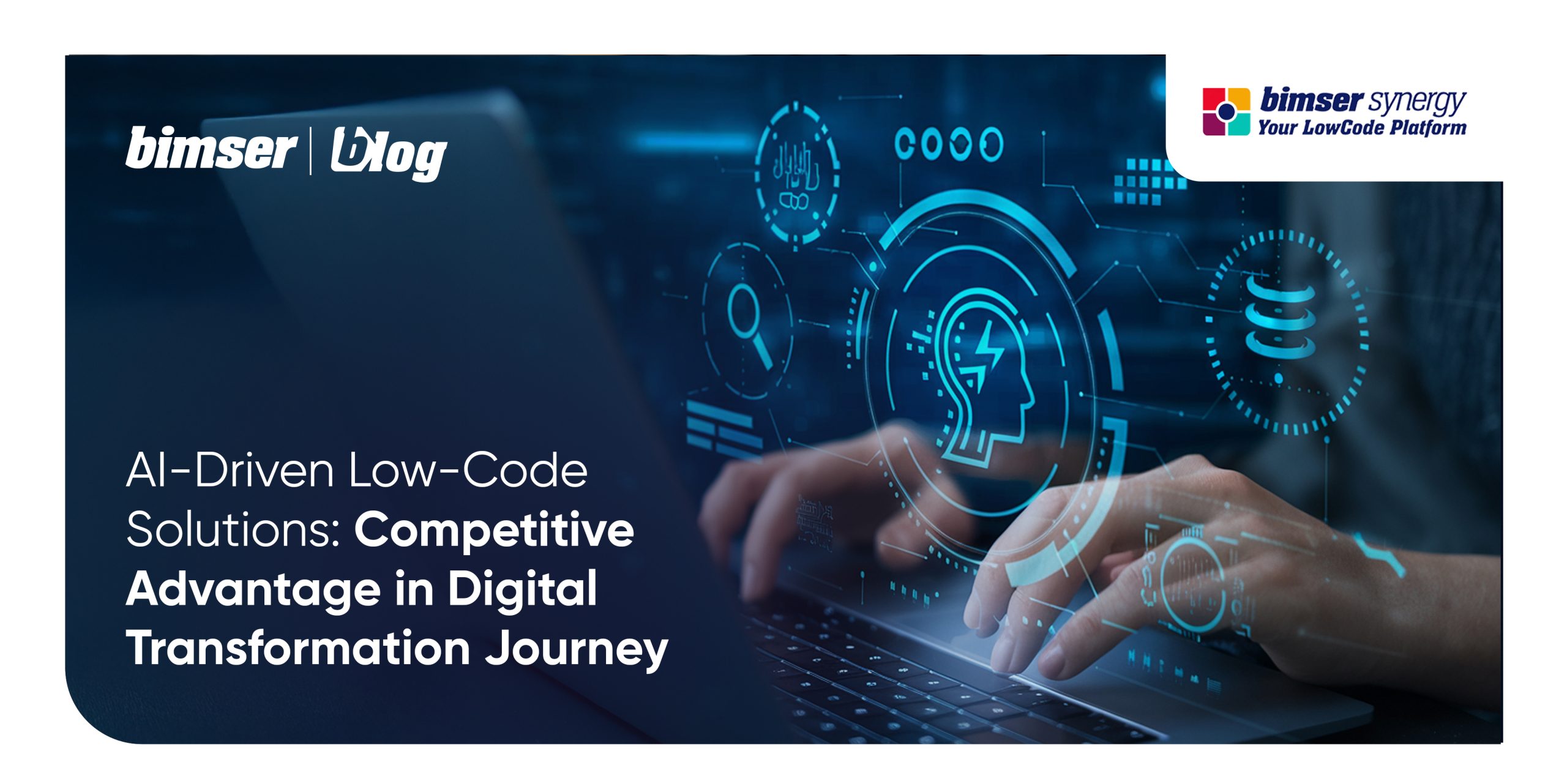AI-Driven Low-Code Solutions: Competitive Advantage in Digital Transformation Journey
AI-driven low-code platforms aim to develop applications faster and make them more accessible to everyone without the need to know how to code. They use AI to improve productivity and save companies’ time, allowing them to focus on other, more important tasks rather than simple coding processes. Companies are looking to adopt this approach to accelerate digital transformation and meet the demands of the technology age.
What Is AI-Driven Low-Code?
AI-driven low-code is an approach that combines AI with low-code platforms. These platforms, requiring minimal coding, perform with visual interfaces and drag-and-drop components. With the integration of AI into these low-code platforms, tasks become automated and even decision-making processes take much less time.
How Low-Code Solutions Differ From Traditional Software Development Processes?
Low-code platforms becoming the go-to for companies wishing to get ahead in digital transformation and save time doing it. Here are some of the advantages low-code platforms have over traditional software development:
- Speed: Low-code platforms use visual interfaces, pre-built templates, and drag-and-drop components to help you make applications in weeks or days while this process takes months or years with traditional software development. Also, low code takes little to no training before use.
- Flexibility: Low-code apps can be quickly modified without needing a major rework. With traditional software development, however, significant portions of the code should be rewritten and retested if a modification is required.
- Efficiency: The development process with low code requires fewer resources because manual coding is not necessary, repetitive tasks can be automated and people who aren’t tech experts (citizen developers) can work on the tasks. According to a recent McKinsey article, AI and low code in the hands of developers can improve productivity by as much as 45%. On the other hand, traditional software development requires expert developers to manually code, test, and deploy apps. This increases the complexity of the job at hand, its cost, and the effort needed.
Where Can You Use AI-Driven Low-Code?
Low-code platforms can be used in many areas including customer service, health, banking, supply chains, and human resources. Let’s take a closer look at how low-code platforms can improve some of these areas:
Customer Service Will No Longer Be a Hassle
With AI-powered chatbots coming into play, customer inquiries will take much less time to handle. FAQs and process orders will be dealt with by AI tools and human agents will only take part in the process if the issue needs to be escalated.
Automate Banking & Fraud Detection!
Processes that usually take a lot of time like loan application processing and fraud detection will be handled by AI. For example, banks can establish a low-code system that automates document verification and approval, saving time and improving customer satisfaction by speeding up their loan approvals.
HR Without the Headache
Low-code platforms can aid HR by automating recruitment, onboarding, and performance management. Companies can build onboarding workflows, they can build systems with which they can track applicants and HR apps where employees can request leaves and access payrolls. Employee performance can also be tracked with similar applications, reducing the workload of HR.
Low Code For Faster Solutions and Smarter Workflows!
Low-code platforms are transforming businesses by speeding up processes, increasing efficiency, and providing more flexibility. These platforms reduce the need for extensive coding and improve response times, and customer engagement. With AI getting further integrated into business processes, low-code platforms will get even more powerful, allowing businesses to make quick changes, reduce costs, and manage tasks with minimal effort. The future of work seems to be low-code platforms and Bimser Synergy Low-Code Platform offers quick solutions to firms looking to digitize their workflow.







